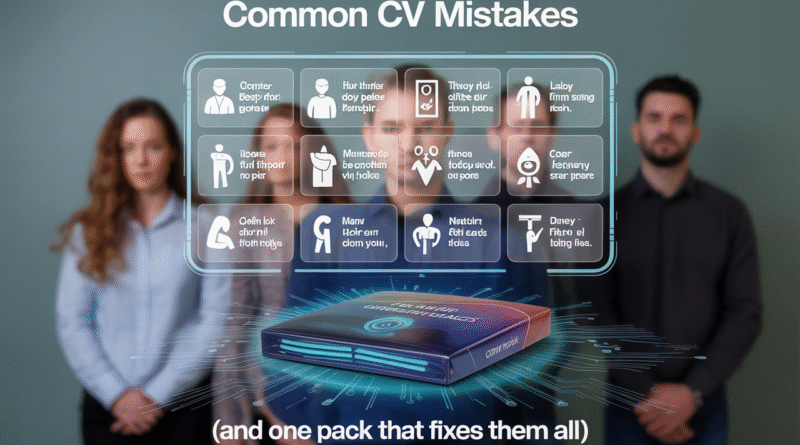10 CV Mistakes That Will Get You Ghosted in 2025 (And One Pack That Fixes Them All)
CV mistakes are one of the main reasons candidates get ghosted, even when their profile perfectly matches the job description.
In today’s job market, it’s not enough to have experience or qualifications. What matters first is how you present them, and most people fail at this stage without even knowing it.
Recruiters receive hundreds of applications for a single position. They don’t read every resume carefully. They scan quickly, judge instantly, and move on fast. If your CV looks outdated, cluttered, or unprofessional, it won’t get a second glance. It’s not fair, but it’s reality.
The truth is, even small CV mistakes can quietly sabotage your chances. A strange layout, an overused font, vague descriptions, or irrelevant information , these details make the difference between getting noticed and getting ignored.
In 2025, the expectations are higher than ever. Whether you’re applying locally or internationally, online or through a referral, your CV needs to be clean, clear, and competitive.
This article will walk you through the 10 most common CV mistakes job seekers make in 2025, why they matter more than you think, and how to fix them « fast and effectively » with a simple resource designed to help you stand out.
❌ Mistake #1: Using Outdated Templates (Or Times New Roman) :
CV mistakes often start with something that seems harmless: the design of your resume. But in reality, the way your CV looks speaks volumes about how seriously you take your job search.
Using outdated templates is one of the most common red flags recruiters notice instantly. A resume that still follows the default Word layout, with centered contact info, basic bullet points, and the classic Times New Roman font, gives the impression that it hasn’t been touched in years. And in 2025, that’s a serious problem.
Recruiters today are used to seeing hundreds of applications for every position. They don’t have time to read everything in detail. What they do instead is scan quickly and trust their gut. If your CV looks visually unappealing or messy, it doesn’t matter what you’ve accomplished. You won’t even make it to the second round.
The problem with outdated templates is not just about aesthetics. They often lack a clear structure, make poor use of space, and fail to highlight what actually matters. When everything looks the same, nothing stands out. This is one of the silent CV mistakes that ruins great profiles before they even get a chance.
To fix this, you don’t need a flashy design full of icons or colors. What you need is clarity, structure, and a modern layout that reflects the professional world of 2025. Your resume should be easy to scan, visually balanced, and adapted to what recruiters expect today.
If you’re still using a template from five years ago, or relying on a generic online builder, it’s time to rethink your approach. Choosing a modern, ATS-friendly layout with clean fonts and smart spacing will immediately make your CV more readable and more convincing.
Professional-looking doesn’t mean complicated. It means deliberate. It means showing that you took the time to craft a document that truly represents you.
This mistake might seem small, but it’s one of the most overlooked CV mistakes with the biggest impact. First impressions matter, and your layout is the very first thing anyone sees.
❌ Mistake #2: Listing Responsibilities Instead of Achievements
One of the most frequent CV mistakes candidates make is treating their resume like a job description. Instead of highlighting what they accomplished, they simply list what they were expected to do. Phrases like « Managed client accounts, » « Responsible for marketing campaigns, » or « In charge of inventory » appear over and over again in rejected CVs.
Here’s the problem. Recruiters already know what your role involved. What they don’t know is how well you performed, what you improved, or what value you brought to the company. A list of tasks doesn’t make your application stand out. Results do.
Employers are not just looking for someone who showed up and followed instructions. They want people who made a difference. And if your resume fails to show that, it becomes invisible – even if you were exceptional at your job.
Instead of writing “Handled social media accounts,” try something like “Increased Instagram engagement by 45% in six months through targeted content strategies.”
Or replace “Responsible for customer support” with “Resolved 100+ customer inquiries weekly with a 92% satisfaction rate.”
These are small shifts in wording, but they change everything. They show initiative, ownership, and impact. They give recruiters a reason to believe that you’ll bring measurable value to their team.
The most effective resumes are the ones that tell a story of progress, not just presence. Think of each role as an opportunity to prove what you can deliver, not just what you were told to do.
This is one of the most overlooked CV mistakes, and yet it can instantly elevate your profile from generic to compelling.
❌ Mistake #3: Ignoring ATS Optimization
Another critical CV mistake in 2025 is ignoring how Applicant Tracking Systems (ATS) work. If your resume can’t be read properly by the software that scans it before a human even sees it, your chances of landing an interview drop drastically, no matter how qualified you are.
Many companies, especially mid-sized to large ones, use ATS software to filter applications. This means your CV is first read by a machine. If your formatting is too complex, or your content lacks relevant keywords, you might be eliminated automatically.
The most common issues include using columns, graphics, text boxes, or fancy layouts that confuse the software. These elements might look good to the human eye, but they can completely break the logic of your content when read by an ATS.
Another big mistake is writing generic or vague job titles and skipping industry-specific keywords. If you’re applying for a marketing role but your CV doesn’t include terms like “campaign,” “analytics,” or “content strategy,” you might not even pass the first screening.
To avoid this, always keep your layout simple and linear. Stick to one column, avoid inserting important information into headers or footers, and use standard section names like « Work Experience, » « Skills, » or « Education. »
Also, study the job description carefully and integrate relevant keywords naturally throughout your resume. This helps the ATS recognize your profile as a good match and increases the chances of a real person reading your application.
This is one of those CV mistakes that feels invisible at first. Your resume might look perfect to you, but if the system can’t understand it, you won’t hear back, even if you’re the ideal candidate.
❌ Mistake #4: Writing a One-Size-Fits-All Resume
Among the most damaging CV mistakes in 2025 is using the same resume for every job application. It might save time, but it shows a lack of effort, and recruiters notice it right away.
Companies are not looking for someone who can do a bit of everything. They want someone who matches this role, in this company, right now. If your CV is generic, it will sound like you are applying everywhere and don’t really care where you land.
This mistake often shows up in vague objective statements like “Seeking a challenging position in a growth-oriented company.” These lines say nothing and waste valuable space. What recruiters want is specificity: why this role, why you, and what makes you the right fit.
Even more importantly, a generic resume usually fails to highlight the most relevant experience or keywords. If you are applying for a project management role, your CV should emphasize coordination, deadlines, budgets, and leadership. Not just “Worked with clients” or “Helped with organization.”
Tailoring does not mean rewriting your whole CV every time. It means adapting your profile to the opportunity. You can reorder bullet points, rephrase a few lines, and adjust the summary to reflect what the company is actually asking for. These small tweaks show attention, intent, and professionalism.
Using the same CV for every application is convenient. However, it is one of the CV mistakes that costs you interviews. And it is easy to fix with a little effort and the right mindset.
❌ Mistake #5: Including Irrelevant or Outdated Information
Another common CV mistake is believing that more information makes your resume stronger. In reality, it is often the opposite. Adding outdated experiences or irrelevant details only dilutes your message and makes it harder for recruiters to focus on what matters.
Many candidates feel the need to list every single job they have ever had, even if it was twenty years ago or completely unrelated to the position they are applying for. Others include hobbies like “watching movies” or “reading,” which add no real value unless they directly support the job or show unique personality traits.
The same applies to personal information that no longer belongs on a modern CV. Your age, marital status, full address, or even a photo are not only unnecessary in many regions but can also create unconscious bias. Employers today are more focused on your skills and your potential impact than on your personal background.
A good resume is not a biography. It is a marketing document. Every word should serve a purpose. If a piece of information does not help convince the recruiter that you are the right person for the role, it probably does not need to be there.
Focus on what is recent, relevant, and results-oriented. Keep your resume concise, sharp, and tailored to the job. This simple shift alone can instantly improve how your profile is perceived.
Eliminating irrelevant content is one of the fastest ways to correct a resume. It helps your strengths stand out, and it shows that you understand what truly matters to employers.
❌ Mistake #6: Poor Layout and Visual Structure
Some CV mistakes are not about what you say, but how you present it. A poorly structured resume, even with great experience, can ruin your chances simply because it is hard to read or feels unprofessional at first glance.
Many candidates underestimate the impact of layout. They fill the page with dense blocks of text, uneven spacing, random font sizes, and inconsistent alignment. The result is a resume that looks chaotic and overwhelms the reader.
Recruiters want clarity. They should be able to find key information in seconds. If they have to search for your job titles, struggle to identify dates, or guess what section they are reading, they will move on. A good layout guides the eye smoothly from top to bottom and helps important points stand out without effort.
Visual consistency is also essential. Using three different fonts or mixing styles without a clear reason makes the document feel messy. On the other hand, sticking to one professional font, defining a clear hierarchy, and aligning everything properly creates a strong first impression.
You do not need to be a designer to build a clean and effective layout. You just need to follow a few simple rules. Prioritize readability, balance text with space, and organize your content in a logical flow. Start with a short summary, then your experience, then your education and skills.
Correcting layout issues is one of the easiest ways to eliminate subtle CV mistakes. It instantly makes your resume more approachable, more memorable, and more professional.
❌ Mistake #7: Forgetting to Include a LinkedIn Profile
In 2025, not having a LinkedIn profile on your CV is one of those silent CV mistakes that can hurt your chances more than you think. While it may seem optional, for most industries today, it has become an expected part of your professional identity.
Recruiters and hiring managers almost always look you up online. If you do not provide a direct link to your profile, they will search for it anyway. And if they cannot find it, or worse, if it does not exist, they may assume that you are either not active professionally or not up to date with current standards.
Including your LinkedIn profile shows that you are present in the job market and that you understand how modern recruitment works. It also allows you to expand beyond the limits of your resume. On LinkedIn, you can showcase recommendations, portfolio links, certifications, and a broader career narrative.
However, simply adding the link is not enough. Your LinkedIn profile must be complete, updated, and aligned with the information on your resume. A mismatch between dates, job titles, or descriptions can raise doubts or create confusion.
If your profile is incomplete or inactive, it is better to fix it before including it. A strong, consistent LinkedIn presence strengthens your credibility and offers recruiters another reason to move you forward in the process.
In a competitive environment, not using all available tools is a mistake. LinkedIn is one of the easiest ways to enhance your visibility and reinforce your professional brand. Do not leave it out.
❌ Mistake #8: Overusing Buzzwords and Empty Phrases
Many candidates try to sound impressive by filling their CVs with generic buzzwords and vague expressions. While it might feel professional to describe yourself as a “motivated team player” or a “dynamic problem solver,” these phrases say very little about what you have actually done.
This is one of the most common CV mistakes, especially among those who are new to the job market or unsure how to describe their experience. The problem is not the intention, but the lack of specificity. Recruiters see these expressions so often that they have become invisible. They do not create interest. They create noise.
Phrases like “results-driven,” “strong communication skills,” or “hard-working” are not harmful in themselves, but if you cannot back them up with real examples, they lose all meaning. Saying you are a good communicator is not as powerful as showing that you led a successful presentation or managed a client negotiation that brought measurable results.
The strongest resumes replace vague labels with concrete facts. They show what you achieved, how you did it, and what the outcome was. Instead of writing “detail-oriented,” say “Created and maintained a reporting system that reduced monthly errors by 30 percent.” That tells a story. It proves value.
Avoiding buzzwords does not mean using boring language. It means being precise, honest, and focused on impact. If every sentence on your resume highlights a clear action and a real result, you are already ahead of most applicants.
This is one of those subtle CV mistakes that weakens your message without you even noticing. Cut the fluff. Keep what matters.
❌ Mistake #9: Neglecting to Highlight Soft Skills Properly
Soft skills are more important than ever in the modern job market. Communication, adaptability, problem-solving, and emotional intelligence are not just extras, they are often what makes the difference between two candidates with similar technical backgrounds. Yet, one of the most overlooked CV mistakes is listing these skills without showing how they are used.
Simply writing “Teamwork” or “Leadership” in a skills section is not enough. These words need context. Anyone can claim to be a good leader, but very few take the time to show where that leadership actually happened, how it played out, and what it led to.
Instead of listing soft skills like items on a grocery list, integrate them into your work experience. Show how you mediated a conflict between departments, how you adapted during a crisis, or how you led a project through unexpected challenges. This adds credibility and shows the recruiter how you behave in real situations.
Another common mistake is placing all soft skills at the bottom of the CV, as if they are less important. In many roles, especially in customer service, sales, management, and creative fields, soft skills are often more valuable than technical skills.
If you want your CV to reflect your full potential, do not just tell them who you are. Show them through what you have done.
Poorly presented soft skills weaken your application. Highlighted the right way, they give depth to your experience and build trust before the interview even starts.
❌ Mistake #10: Leaving Out Keywords Relevant to the Job
One of the most silent but damaging CV mistakes is failing to include the right keywords. In a world where many companies rely on Applicant Tracking Systems to filter resumes, not speaking the language of the job description can make your application invisible.
Recruiters and software alike are scanning for terms that match the skills, tools, and responsibilities outlined in the job post. If your resume does not reflect those terms, even if you have the experience, you risk being passed over because the connection is not obvious.
For example, if a job asks for “project lifecycle management,” but your CV only mentions “project coordination,” the system may not see the match. The same applies to specific software, methodologies, or certifications that are critical in your industry.
This does not mean you should stuff your resume with keywords in a robotic way. The goal is to integrate them naturally, especially in your work experience and skills sections. Read the job offer carefully, identify the most repeated terms, and mirror that vocabulary in your own wording.
It also helps to adapt your resume slightly for each application. A few small changes to reflect the terminology of the company can make a big difference in visibility and relevance.
Forgetting to do this is one of the quietest CV mistakes, but also one of the easiest to fix. Once you start thinking like the employer and using the same language, your CV becomes more aligned, more targeted, and more effective.
You’ve just read the 10 most common CV mistakes that continue to ruin job applications in 2025. The good news? You don’t need to fix them one by one.
If you’re looking for a faster way to build a strong, modern, and professional resume, we’ve created a Career Starter Pack designed to help job seekers like you stand out immediately.
This pack includes:
- Clean, easy-to-edit CV templates (Word and Canva formats)
- Step-by-step guides to help you fill each section correctly
- A version adapted to the Canadian job market
- A practical and visual layout that makes a real difference
Here’s a quick preview of the current version (in French for now). The English version is in development and will be available soon.
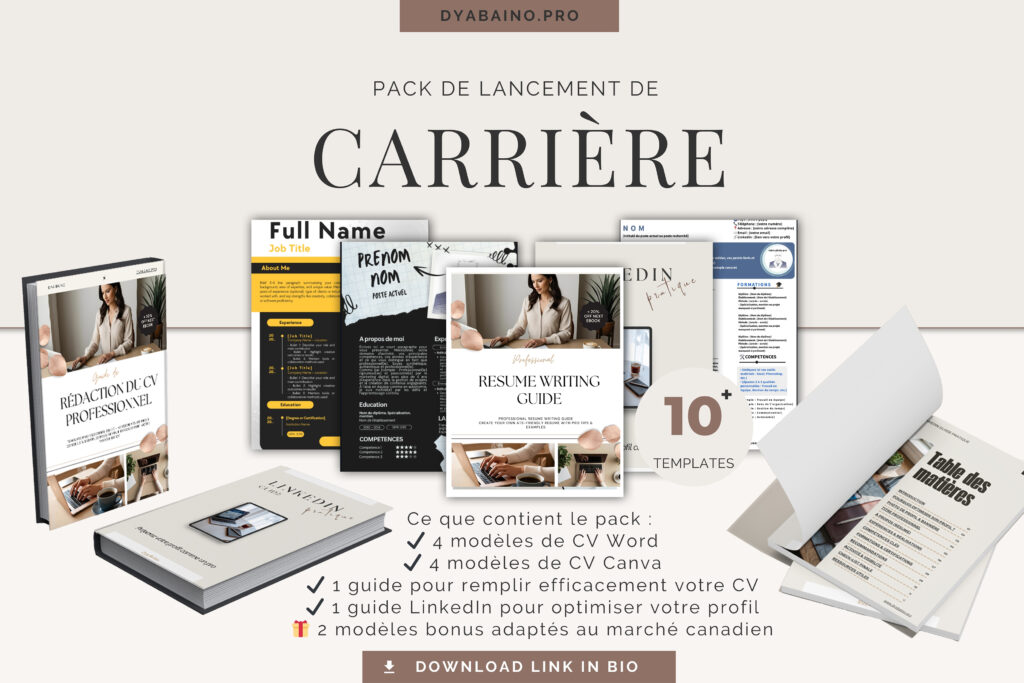
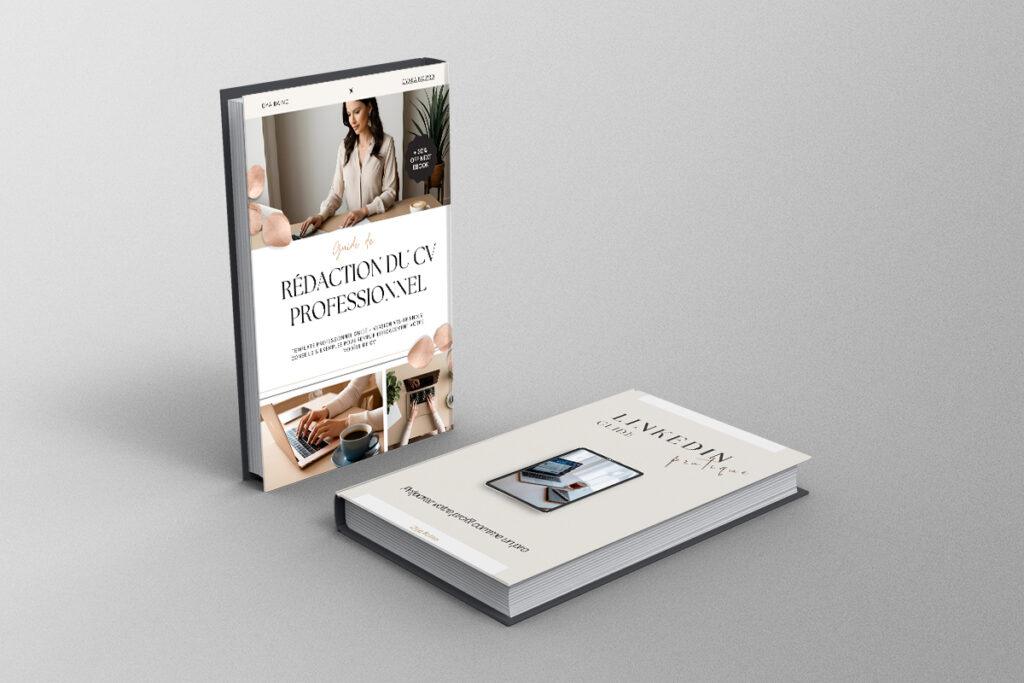
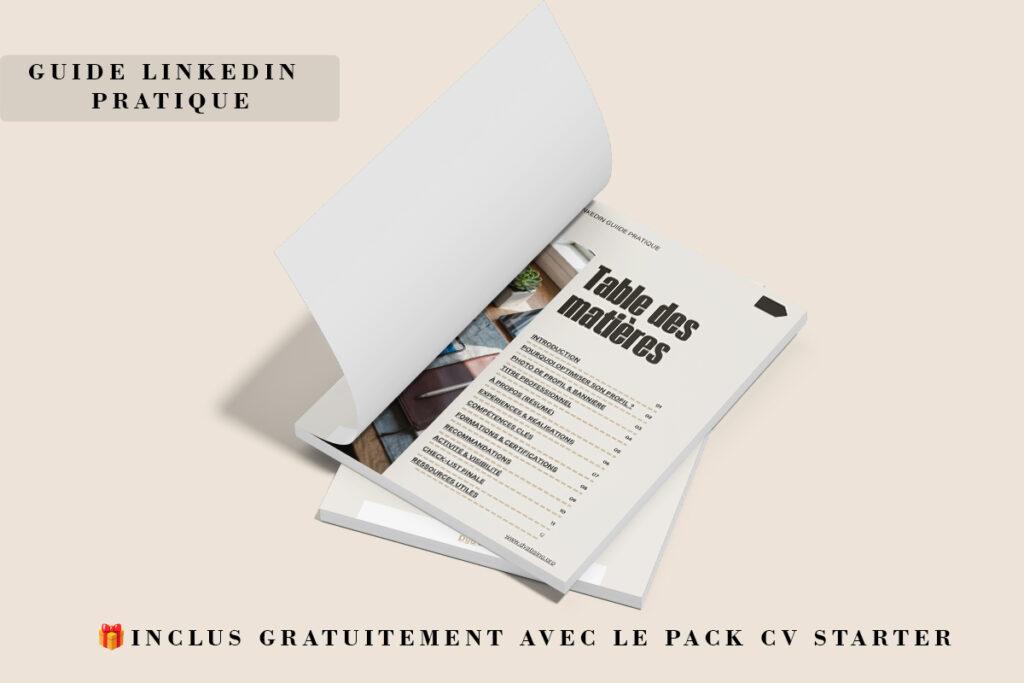
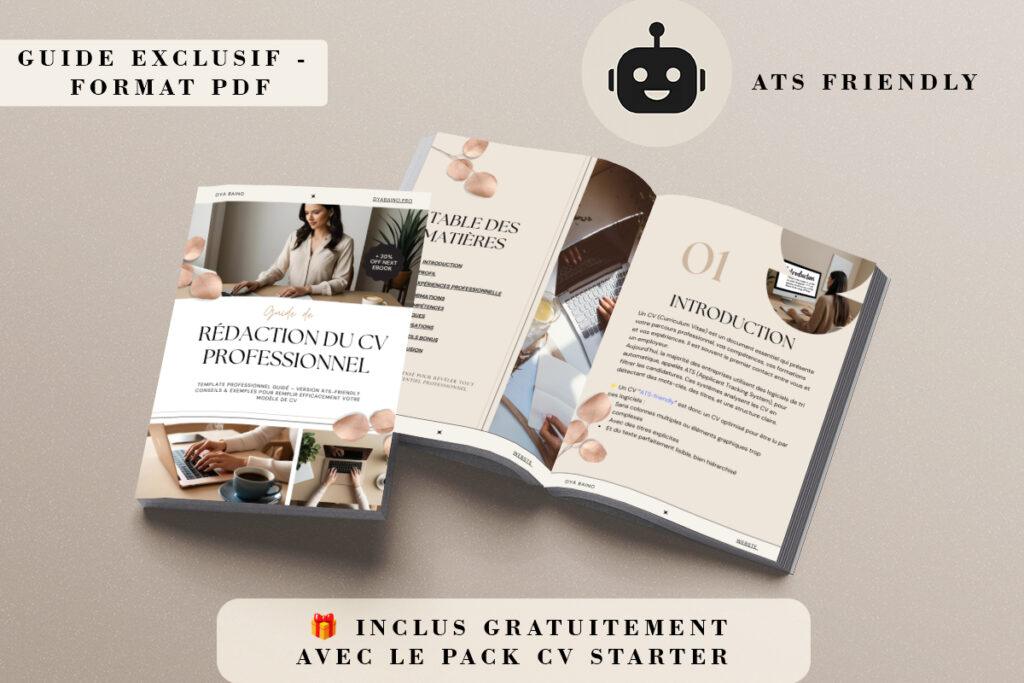
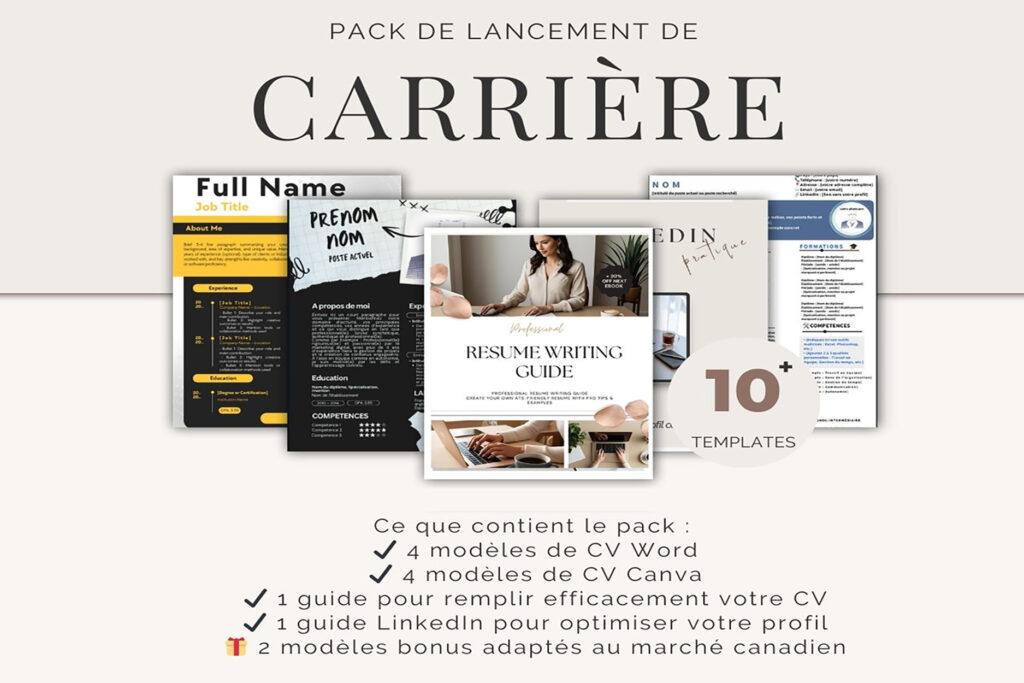
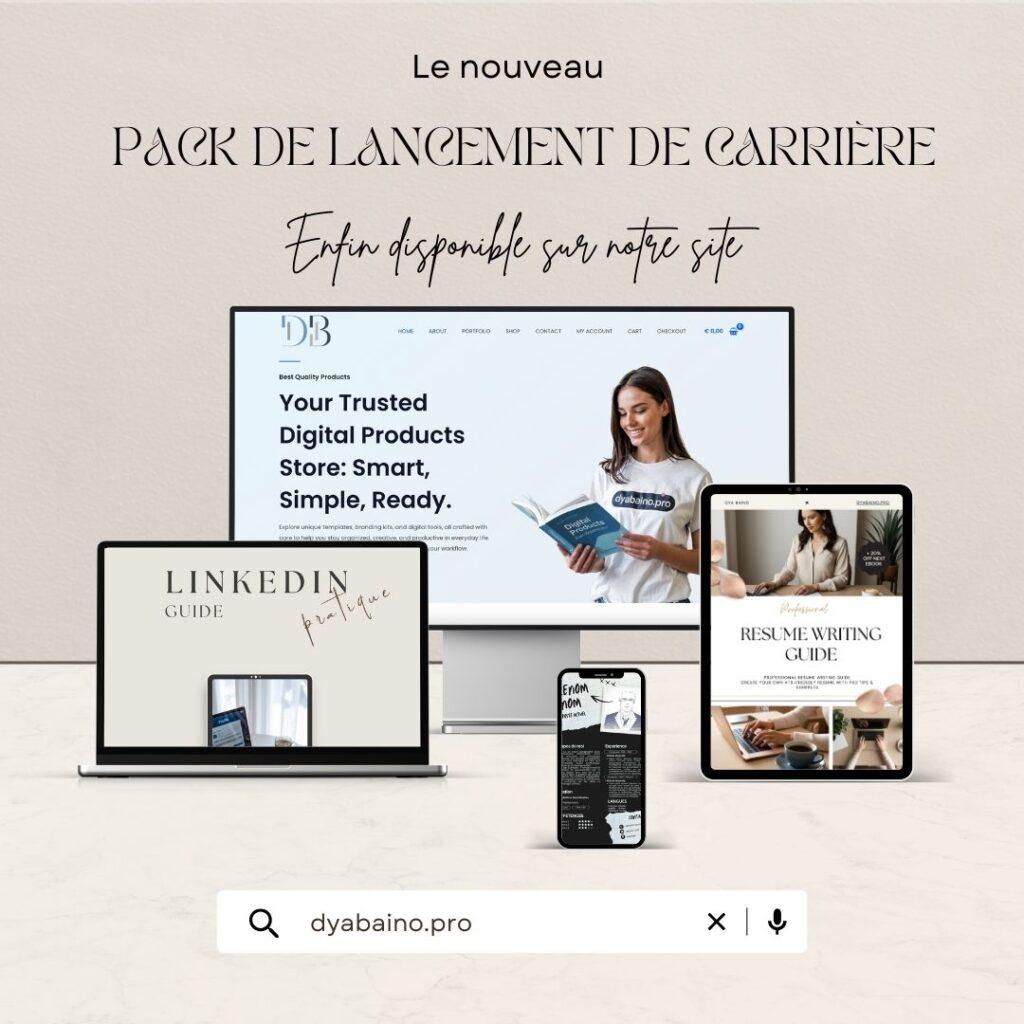
Before you close this tab and rush to update your resume, remember that job hunting isn’t just about documents. It’s also about mindset.
If stress, doubt, or anxiety are holding you back, we’ve also published a practical guide to help you regain control and confidence.
👉 Read: How to Get Rid of Anxiety – A Clear and Actionable Guide
And if Looking to create income on your own terms — even if you’re not a designer?
We recently published a full guide on how to start a Print on Demand business in 2025, even if you don’t have any creative background.
👉 Read: How to Succeed in Print on Demand Without Being a Designer
It’s perfect for creatives, students, or anyone looking to turn their time online into something profitable.

